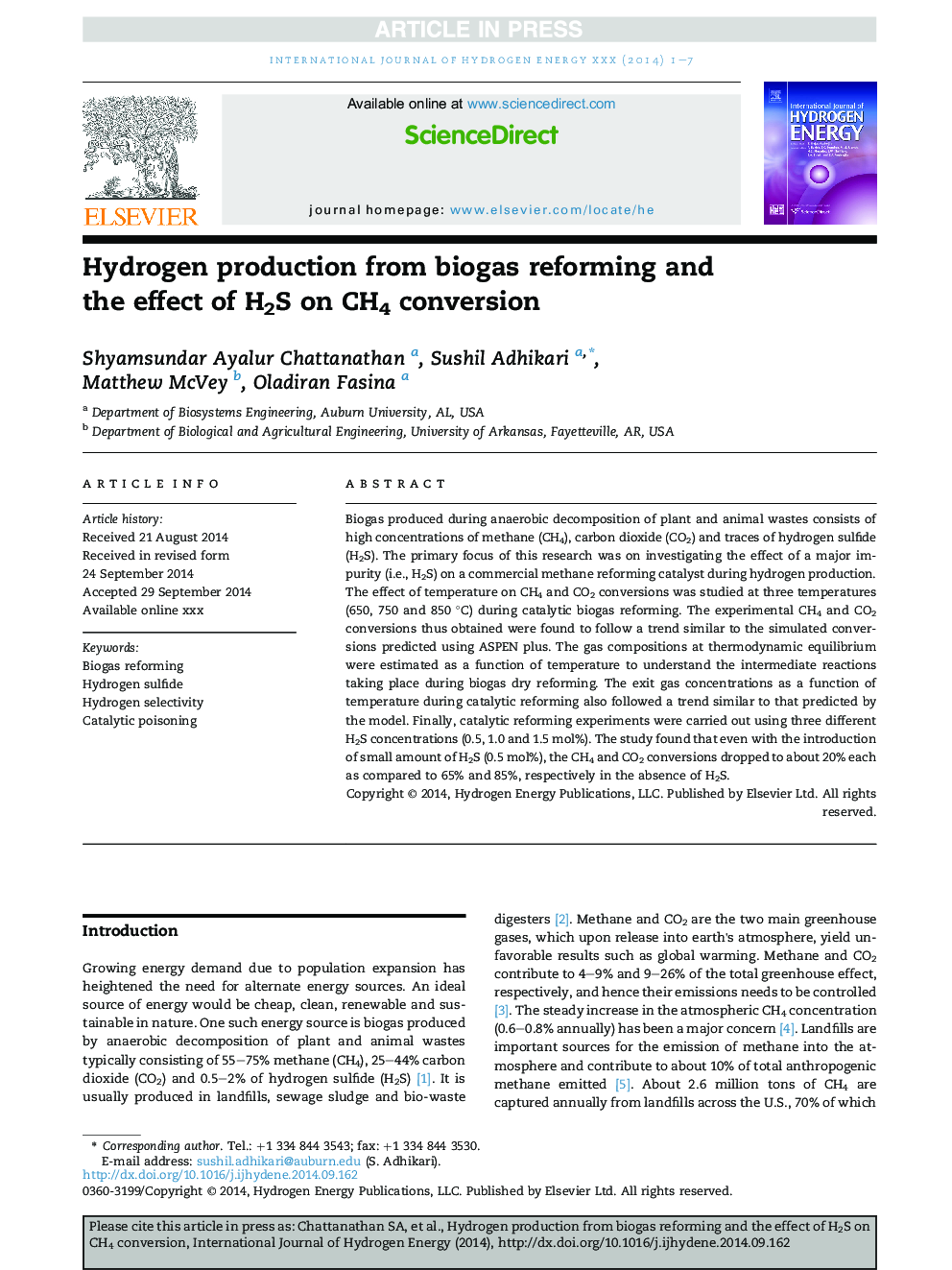| Article ID | Journal | Published Year | Pages | File Type |
|---|---|---|---|---|
| 7717160 | International Journal of Hydrogen Energy | 2014 | 7 Pages |
Abstract
Biogas produced during anaerobic decomposition of plant and animal wastes consists of high concentrations of methane (CH4), carbon dioxide (CO2) and traces of hydrogen sulfide (H2S). The primary focus of this research was on investigating the effect of a major impurity (i.e., H2S) on a commercial methane reforming catalyst during hydrogen production. The effect of temperature on CH4 and CO2 conversions was studied at three temperatures (650, 750 and 850 °C) during catalytic biogas reforming. The experimental CH4 and CO2 conversions thus obtained were found to follow a trend similar to the simulated conversions predicted using ASPEN plus. The gas compositions at thermodynamic equilibrium were estimated as a function of temperature to understand the intermediate reactions taking place during biogas dry reforming. The exit gas concentrations as a function of temperature during catalytic reforming also followed a trend similar to that predicted by the model. Finally, catalytic reforming experiments were carried out using three different H2S concentrations (0.5, 1.0 and 1.5 mol%). The study found that even with the introduction of small amount of H2S (0.5 mol%), the CH4 and CO2 conversions dropped to about 20% each as compared to 65% and 85%, respectively in the absence of H2S.
Related Topics
Physical Sciences and Engineering
Chemistry
Electrochemistry
Authors
Shyamsundar Ayalur Chattanathan, Sushil Adhikari, Matthew McVey, Oladiran Fasina,
